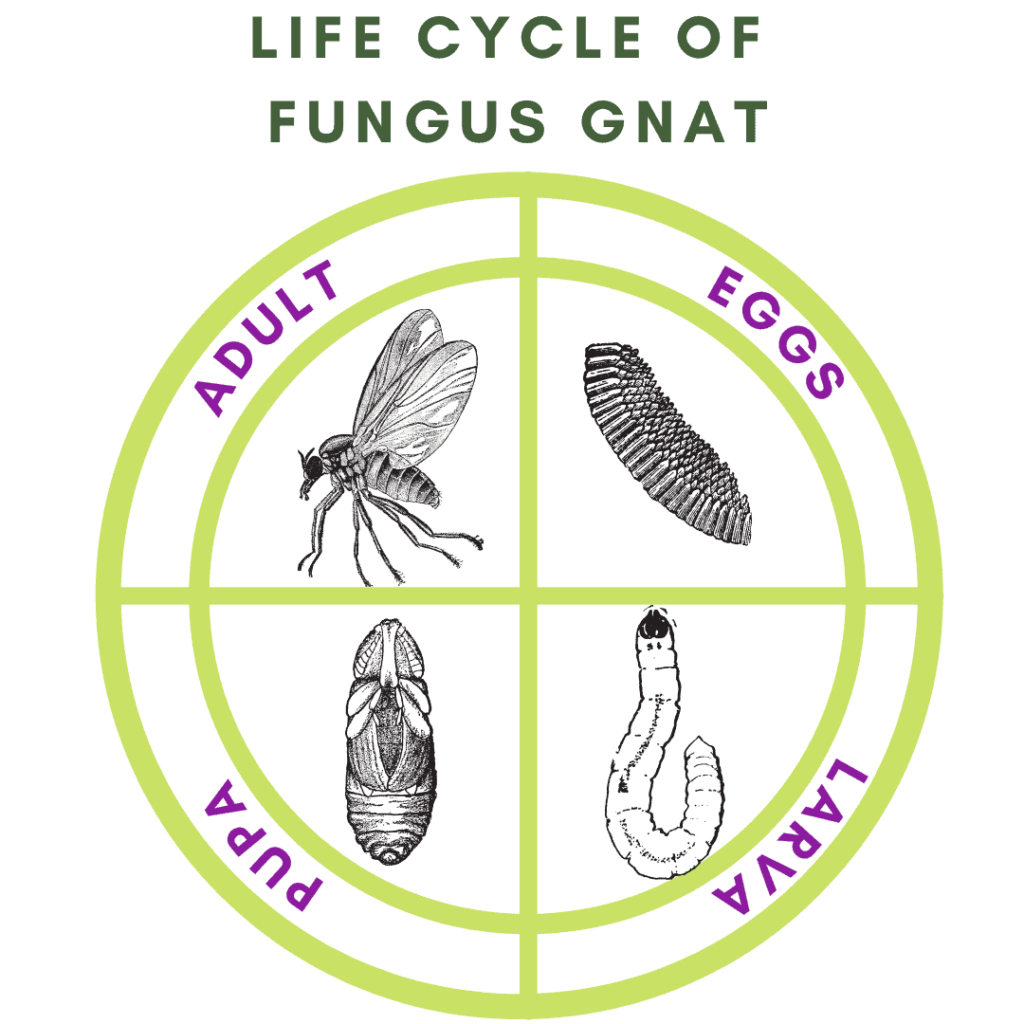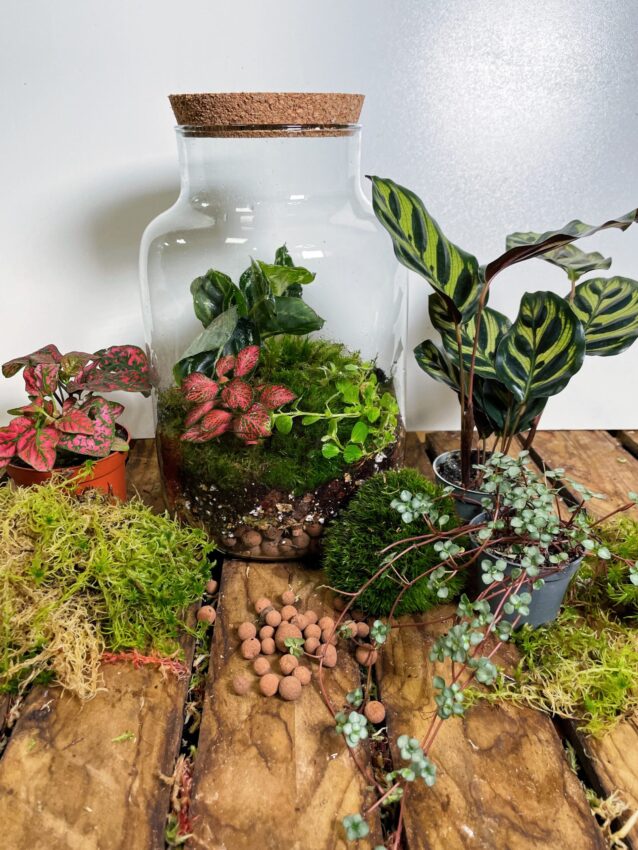Table of Content
- About
- Light
- Humidity
- Water
- Soil
- Pest & Diseases
- Feed
- Pruning & Propagating
- Repotting
- Troubleshooting & Tips
- Toxicity
- Species
- Soleirolia solerolii
About
Irish Moss is vibrant, delicate-looking ground-covering plant that makes for a fantastic desk plant or even better for use in a terrarium. While this plant is not actually moss and would technically be classified as a herb it belongs to the nettle family and is formally known as Soleirolia solerolii.
It has a huge variety of common names, which is a testament to its popularity among both indoor and outdoor gardeners. You may find it under the names, mind your own business, Mother of Thousands, Friendship Plant, Baby’s Tears, Paddy’s wig and Irish Moss, the list could go on and on.
This species is the only member of its genus and only consists of a few varieties. Unlike many houseplants we keep, they are native to southern Europe, mainly Italy. In the wild, they can form dense mats of short and irresistible-to-touch foliage. In warmer climates closer to its natural environment Irish Moss is classed as invasive and can quickly take over if not dealt with.
Light
Irish moss thrives in bright indirect light, this will help to keep it filled with rich colour. Indoors they can also happily survive under artificial light, they may grow slightly slower in these conditions but this may be an advantage more than a hindrance, especially if used in a terrarium.
This plant will also happily tolerate partial shade conditions but for the best result the brighter the indirect light the better.
Avoid direct sunlight at all costs, these plants are delicate and quickly become discoloured and scorched from the strong rays of the sun.
Humidity
Irish Moss sits relatively high up on the humidity needs. For this plant to thrive and grow at its best it will want to be in an environment around 70-80% humidity. It will tolerate a little bit lower than this but in the average household humidity (40%) it will quickly turn brown.
This love for humidity makes them much better suited to living in a steamy bathroom or kitchen but even then you might still need to mist the plant occasionally. The safes bet is to place this plant in a terrarium where the enclosed environment will retain much more moisture in the air
Pro Tip
The best way to maintain high humidity is to use a humidifier placed about a metre away from your plant to provide high ambient humidity. Alternatively, you could place your plant on an undertray filled with Leca pebbles or small stones that are sitting in a shallow layer of water. Make sure the plant is not submerged in any water as this can lead to root rot. As the water from the undertray evaporates from the surface of the pebbles or stones it will keep humidity levels high exactly where you need it most.
Water
During the summer month, Irish Moss will require regular watering and tend to be a thirsty plant. You never want the plant to completely dry out, in the long run, will cause damage and set the plant back, it will also cause a dramatic wilting that may trick you into thinking the plant is dead. But if you leave it to soak in an undertray for an hour or so and then leave it for a day it should pick back up.
Still, be careful not to overwater this plant as it can still be susceptible to root rot. Especially in the winter months when the watering requirements will drastically drop.
Top Tip
Always water from the base of the plant. Sitting your plant in an under tray and allowing it to absorb water from the base will reduce the risk of overwatering and is a good preventative measure for fungus gnats. Remember to always set a timer from the minute the plant goes in the water, we don’t want any forgotten casualties on our hands.
Pro Tip
Before you water your plant, take note of the weight of the pot. Once you’ve watered the plant, try to notice the difference in weight from before. Now you can quickly tell if your plant needs water by just lifting it up.
Soil
Irish Moss prefers well-drained soil that can retain moisture between watering. The ideal soil mix for Irish Moss will be nutrient-rich, allow for good aeration, and be free-draining with a smidge of water retention. Most houseplant potting mixes will be sufficient, but you can always add perlite for some additional drainage, and vermiculite for added water retention. With a combination of these, you can provide the best environment for your plant to thrive.
If used in a terrarium a terrarium-specific compost will do the job just as well.
Pest & Dieases
It is good practice to regularly check your plants for any signs of aphids, red spider mites, mealy bugs, and thrips. You may notice some signs of distress and allow yourself time to prevent a full-blown attack.
The most common pests and problems that form with Soleirolia are aphids, powdery mildew and fungal growth. Most of these issues stem from over or under-watering.

Check our video on homemade pest remedies or head over and read are Fungus Gnat Fact Check
Feed
Thriving plants will need regular feeding to keep the nutrients at optimal levels in the soil. Like most houseplants, to promote healthy roots, stems, and leaves they will need a steady supply of nitrogen, phosphorus, and potassium. The most important is nitrogen to keep the foliage looking its best.
A good liquid houseplant feed can be applied every four weeks during the growing season. There’s no need to feed during the winter, light levels are much lower and the plant won’t use as much energy to grow.
Top Tip
A drop of houseplant feed in a mister bottle is a great way to feed via its foliage. This will help to enhance the look of their already stunning leaves!
Pruning & Propagating
It is important to regularly trim and prune Irish Moss this will help to encourage a continued influx of new growth and will keep it looking at its best. This will be just as important if housing this plant in a terrarium and will help to keep it shapely and vibrant.
REMEMBER – Always use clean and sharp pruning scissors!
The easiest way to propagate Irish Moss is by dividing the plant, this will be easier the more mature the plant is.
Dividing – If you have a larger plant with a substantial root ball this can be cut into pieces and repotted. Place the root ball on a flat surface and look for natural division points (these can be identified by how the stems are growing from the surface of the plant). Once you have identified your division points and assessed that each point contains a substantial amount of roots, using a sharp sterilised knife, cut through the root ball. Transplant each new division into an appropriately sized pot in fresh potting soil.
Top Tip
Dividing plants can cause shock and be a traumatic experience for your plant. So make sure the plant is in good health and has been well watered the day before to give the plant the best chance of survival.
Repotting
These plants grow quickly! It’s best to re-pot your Irish Moss once the roots fill their pot. Depending on the size of the plant, you may find yourself repotting once per year. That being said, they don’t mind being pot-bound, they can survive like this for quite some time, as long as they are receiving enough nutrients via feeding.
The pot size can increase by one step up every year for as long as you have the space to house the new influx of growth. If you have reached your maximum pot size you will need to top-dress the plant once a year with a fresh layer of soil to replenish the nutrients.
The best time to repot your Irish Moss is when spring arrives. Outside temperatures will rise and the daylight hours will increase. When this happens your Soleirolia will react quickly to the environmental change and start producing lots of new foliage growth.
You will need to pick a pot with good drainage, we don’t want water hanging around the roots.
Next, fill a third of the way up with a Houseplant Potting mix. Place the root ball of the plant in the centre of the pot.
When you’ve finished and got your plant back in the perfect spot you can give it a thorough watering to settle the plant into its new pot. Keep a close eye on it for the first couple of weeks and then relax back into your normal watering and feeding schedule.
Troubleshooting & Tips
- The most important thing to provide is humidity and water. These are easy plants to grow but won’t forgive you for either missing water or keeping the air too dry.
- Pot-bound plants are more susceptible to drying out, and while they don’t mind being kept like this it does require more care.
- Brown leaves will occur if the plant is exposed to much direct light. This can be trimmed away to allow new growth to come through.
- If the leaves are turning black and mushy this is a sign of overwatering and root rot.
Toxicity
These plants are not toxic or harmful to either people or pets so don’t worry when keeping them in the home.
Species

Soleirolia solerolii
Soleirolia soleirolii is a delicate and charming plant that is sure to capture the hearts of all who encounter it. The plant has small, round leaves that are a lush, vibrant shade of green, with a soft and velvety texture that invites touch. The leaves of the Soleirolia soleirolii are arranged in dense mats, cascading gracefully or trailing gently along as they grow.
If you enjoyed this guide head over to Articles & Blogs to learn more or check out our YouTube for even more useful information!





